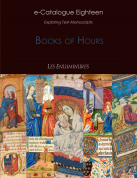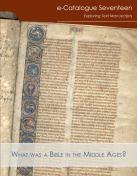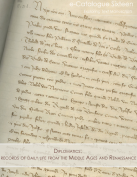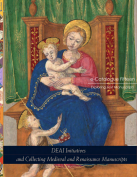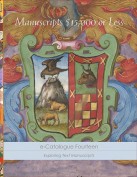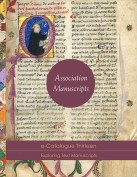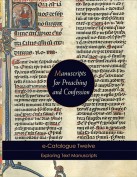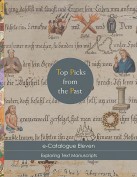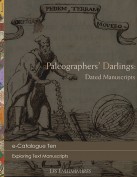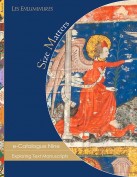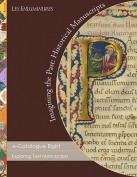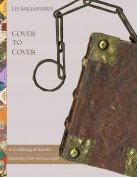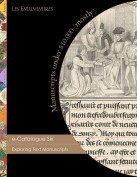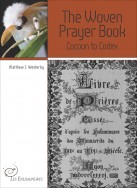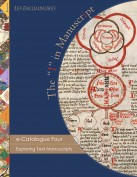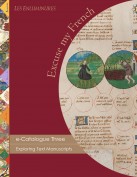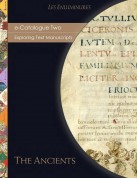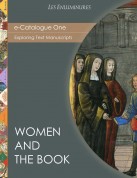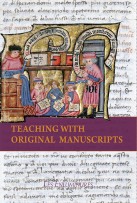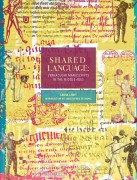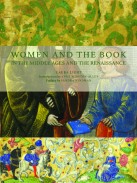E-Catalogue Eighteen: Books of Hours
Omnipresent in the late Middle Ages and Renaissance, Books of Hours are often called the bestseller of the Middle Ages. Today they are one of the most common types of manuscript surviving from this era, found widely in public and private collections, and often reproduced.
E-Catalogue Seventeen: What Was a Bible in the Middle Ages?
If you consult Webster’s dictionary, you will learn that “The Bible” is the texts that are considered sacred by Jews and Christians, and also the physical object that includes these texts. This e-catalogue explores selective aspects of the Bible in the Middle Ages, seen through the lens of 14 manuscripts.
E-Catalogue Sixteen: Records of Daily Life from the Middle Ages and Renaissance
Legal and administrative records from public and private sources, or documents, might sound a little dry, or a little specialized. If that was your first thought, the items collected here in this short list will surprise you both with their immediacy (they all record things of real importance to everyone mentioned in their text) and, often, with their beauty, seen in their script, handsome notary marks, and even, at times, illumination.
E-Catalogue Fifteen: DEAI Initiatives and Collecting Medieval and Renaissance Manuscripts
DEAI initiatives (Diversity, Equity, Access, and Inclusion) ask us to think differently about building collections, particularly collections in academic institutions. At Les Enluminures we recognize that the process can at first seem especially challenging for manuscripts from the Middle Ages and Renaissance. But if you dig a little deeper, nothing is further from the truth.
E-Catalogue Fourteen: Manuscripts $15,000 or Less
This is the second e-catalogue in our series, “Exploring Text Manuscripts,” that includes manuscripts chosen because of their price. All 13 manuscripts are $15,000 or less; eight are less than $10,000. We all know that price can be the determining factor in an acquisition. For collectors on a budget, this group of manuscripts illustrates two categories of manuscripts that are worth considering carefully.
E-Catalogue Thirteen: Association Manuscripts
Association copies (books owned or annotated by their author, someone close to the author, or more broadly, by any notable individual) are prized by collectors of printed books. It is not ordinarily a term applied to medieval or Renaissance manuscripts, but we have recently been having fun with the concept, which underlines the fascination we all have with the people associated with every book, be it printed or copied by hand.
E-Catalogue Twelve: Manuscripts for Preaching and Confession
Manuscripts related to pastoral care (the church’s ministry for the spiritual welfare of the laity) were an important genre in the Middle Ages, serving the practical needs of the medieval clergy, and offering scholars and students today valuable insights into daily life in this period.
E-Catalogue Eleven: Top Picks from the Past
In this catalogue, we return to some of our favorite manuscripts from the extensive inventory on www.textmanuscripts.com to demonstrate how diverse, and often surprising, that inventory is.
E-Catalogue Ten: Paleographers’ Darlings
Medieval manuscripts don’t have title pages neatly listing when and where they were written. But descriptions of these manuscripts always begin with this information. Have you ever wondered how that is possible? The short answer to that question is dated manuscripts. Just as some scribes signed their names (see our e-catalogue, “The ‘I’ in Manuscript”), some recorded when, and sometimes also where, they copied their manuscript (commonly the date when they finished their task).
E-Catalogue Nine: Size Matters
Manuscripts come in all sizes. Size is one of the most important clues to how a book was used. It is also the most difficult attribute of a book to convey by means of digital images. This list includes the six smallest and six largest manuscripts (including one early printed book) from our Text Manuscripts site.
E-Catalogue Eight- Imagining the Past: Historical Manuscripts
Historical writing in the Middle Ages and the Renaissance encompassed numerous genres; the eight manuscripts included here reflect this diversity. Carl Sagan has said, “You have to know the past to understand the present.” These manuscripts reveal that knowing how the past understood its own past, will allow us in turn to understand the past.
E-Catalogue Seven: Cover to Cover
This short catalogue explores bindings as evidence of use and ownership through ten manuscripts, all in early bindings (seven in their original, or closely contemporary bindings).
E-Catalogue Six: Manuscripts under 10,000 (mostly)
Six books and manuscripts; all are less than $20,000, and three are less than $10,000.
E-Catalogue Five: Picturing Texts
Ten books and manuscripts with figurative decoration.
SATELLITE 1 - The Woven Prayer Book: Cocoon to Codex
Text by Matthew J. Westerby
The Satellite Series enables us to explore topics at the edges of our core inventory, looking ath the big picture and connections across media. It is fitting that the first "satellite" is focused on neo-Gothic books woven with silk. Matthew J. Westerby excellent essay presents new findings on five books programmed with punch cards and produced with Jacquard looms in Lyon for submission to the 1889 World's Fair.
The Satellite Series enables us to explore topics at the edges of our core inventory, looking ath the big picture and connections across media. It is fitting that the first "satellite" is focused on neo-Gothic books woven with silk. Matthew J. Westerby excellent essay presents new findings on five books programmed with punch cards and produced with Jacquard looms in Lyon for submission to the 1889 World's Fair.
E-Catalogue Four: The “I” in Manuscript
Manuscripts are, by definition, made by hand, and one of the thrills of studying them is connecting with the many people who made them, from the parchment or paper maker, to the scribe, the illuminator, and binder, and the many people who owned and read them down through the centuries. At times, though, these people can seem abstract and are often unnamed. It is thus exciting when the personal comes into focus and we meet the “I” in a manuscript, as it does in the case of each of the ten manuscripts in this varied list. Here we have scribes and original owners known by name, owner-produced books (or as we have called them, “selfie-books”), and biographies that by definition focus on the personal. For the collector and in the classroom, these manuscripts bring the Middle Ages and Renaissance alive.
E-Catalogue Three: Excuse My French
“If we want to eavesdrop on the actual words of the medieval courts, or the banter of trade, or the inmost thoughts of private piety, it will not be in Latin but in medieval French, English, German, Dutch, or Italian,” so says the inimitable Christopher de Hamel. In this list, we present ten manuscripts in French. Each broadens our picture of medieval and Renaissance society. Canon Law is the law of the church, and Latin was undoubtedly the language of clerics. A thirteenth-century Canon Law manuscript in French reminds us that viewing the civilization of the Middle Ages exclusively through the lens of Latin is much too narrow. Included are histories, feudal records, and texts exploring ethical and religious behavior, some originally composed in French, others translated from Latin. For the classroom and the collector, these manuscripts bring to life the stories of men and women in everyday life in the past.
E-Catalogue Two: The Ancients
Sallust, Plutarch, Cicero, Juvenal, Boethius–are these authors we still read? that we should still read? Certainly, they have shaped our society. As the historian Mary Beard says, “many of our most fundamental assumptions about power, citizenship, responsibility, political violence, empire, luxury, beauty, and even humour, have been formed, and tested, in dialogue with the Romans and their writing.”
E-Catalogue One: Women and the Book
Manuscripts made and/or owned by women offer one of the best and most vivid resources for telling the stories of these women, secular and religious, young and old, high-born and common. Seven of the manuscripts in our new list were owned by, and often made by, nuns; the lives of secular women are revealed in three special manuscripts. For the classroom and the collector, these manuscripts bring to life the roles women played in society.
Teaching with Original Manuscripts
In April 2019 we reached TM 1000 on our website www.textmanuscripts.com. The present publication was created to celebrate both this remarkable milestone and the success of our newest program, Manuscripts in the Curriculum. Sixteen manuscripts from our past inventory and sixteen manuscripts from our current inventory (on an insert of separate cards) together illustrate sixteen major categories of manuscripts for teaching.
Shared Language: Vernacular Manuscripts in the Middle Ages
Text by Laura Light with an introduction Christopher de Hamel, and essays by Dennis Dutschke, Stephen Mossman, Emily Runde, John Van Engen, and Mary Beth Winn, fully illustrated, in English
The thirty-six manuscripts included in this catalogue provide viewers unique access to the authentic, spontaneous vision of people in medieval France, Italy, Germany, the Low Countries, and Britain.
The thirty-six manuscripts included in this catalogue provide viewers unique access to the authentic, spontaneous vision of people in medieval France, Italy, Germany, the Low Countries, and Britain.
Women and the Book in the Middle Ages and the Renaissance
Text by Laura Light with an introduction by Anne Winston-Allen, 127 pp., fully illustrated, in English
This catalogue showcases thirty-six manuscripts that demonstrate the important role that women played as authors, artists, scribes, patrons, and book-owners throughout the Middle Ages and the Renaissance. TEXT MANUSCRIPTS vol. 5
This catalogue showcases thirty-six manuscripts that demonstrate the important role that women played as authors, artists, scribes, patrons, and book-owners throughout the Middle Ages and the Renaissance. TEXT MANUSCRIPTS vol. 5

Contact the Seller 980 North Michigan Ave., Suite 1330
Chicago, IL 60611
Share this Profile
